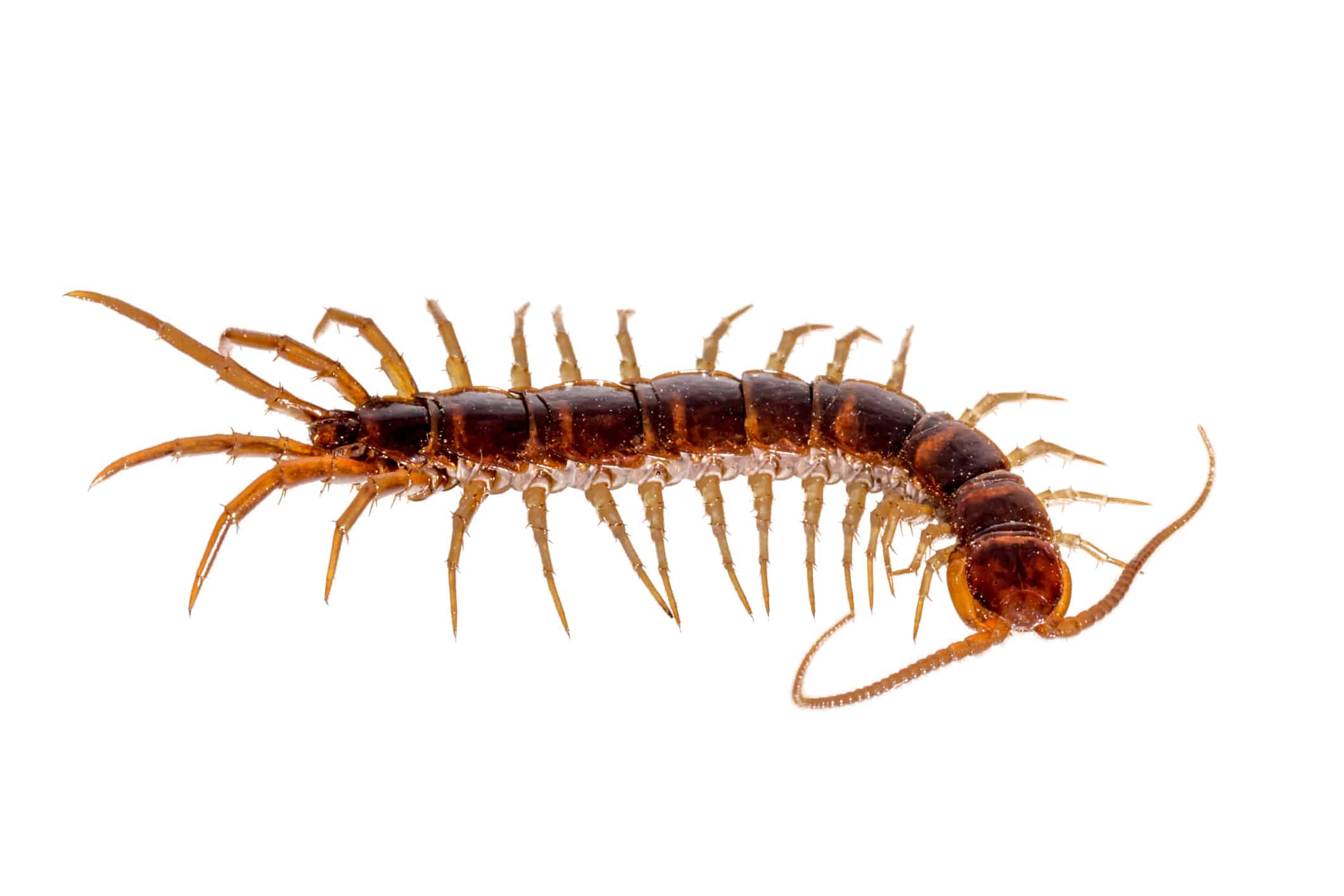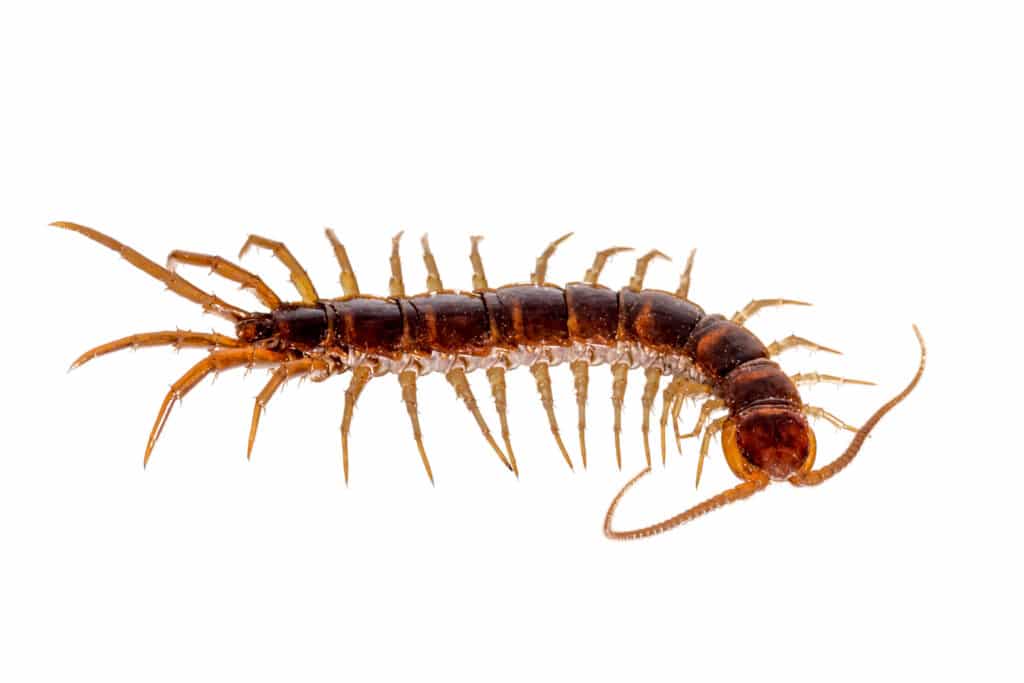
Identify Centipede Guide
Quick Facts About Centipedes
Centipedes are fast-moving, predatory arthropods with long, segmented bodies and numerous jointed legs. Despite their name suggesting they have 100 legs, centipedes can have anywhere from 30 to 354 legs, always with an odd number of pairs. These carnivorous creatures may occasionally enter Tennessee homes, bringing their venomous bite with them.- Size: Varies by species (1/4 inch to 6+ inches)
- Color: Usually reddish-brown to grayish-yellow
- Shape: Long, flattened, segmented body with one pair of legs per segment
- Active Season: Year-round, more visible during warm, humid weather
- Lifespan: 1-6 years depending on species
- Reproduction Rate: Females lay 15-60 eggs in soil or decaying matter
What Do Centipedes Look Like?
Centipedes have distinctly segmented bodies with one pair of legs attached to each body segment. Their bodies are typically flattened, allowing them to move quickly and squeeze into tight spaces. All centipedes have a pair of antennae on their head and specialized appendages called forcipules—modified front legs that function as venomous fangs used to capture prey.
Key Identifying Features
- Segmented body with one pair of legs per segment (unlike millipedes with two pairs per segment)
- Rapid movement (much faster than millipedes)
- Pair of antennae on the head
- Forcipules (pincer-like appendages) behind the head used to inject venom
- Last pair of legs often longer than the others, extending behind the body
Related Species
Centipedes are sometimes confused with millipedes, but several characteristics distinguish them:
- Centipedes have flattened bodies; millipedes have more rounded, cylindrical bodies
- Centipedes move quickly; millipedes are slow-moving
- Centipedes have one pair of legs per segment; millipedes have two pairs per segment
- Centipedes are predatory carnivores; millipedes primarily feed on decaying plant material
- Centipedes have venomous bites; millipedes defend themselves by secreting chemicals
Health Risks
Centipedes can pose certain health risks to humans and pets.
- Venomous bite that can cause pronounced pain similar to a bee sting
- Potential for allergic reactions in sensitive individuals
- Larger centipedes can cause more severe reactions
- Small children and people with insect allergies may have stronger responses
- Smaller centipedes often cannot penetrate human skin
Where to Look for Centipedes in Your Home
Centipedes prefer damp, dark environments. In homes, check bathrooms, basements, crawl spaces, and laundry areas where moisture levels are higher. They often hide under sinks, in drains, behind baseboards, and in cracks in walls or foundations. Outside, they inhabit areas beneath leaves, stones, boards, tree bark, or outdoor planters. Being primarily nocturnal, centipedes are most active at night, so you may only spot them when turning on lights in dark rooms.
When to Call Professional Help
Professional intervention becomes necessary when:- You’ve noticed multiple centipedes in your home
- Their presence suggests underlying moisture issues or other pest infestations
- DIY pest control methods have failed to eliminate them
- You or family members have allergies or are particularly sensitive to insect bites
- You want a comprehensive approach to identify and address the root causes

